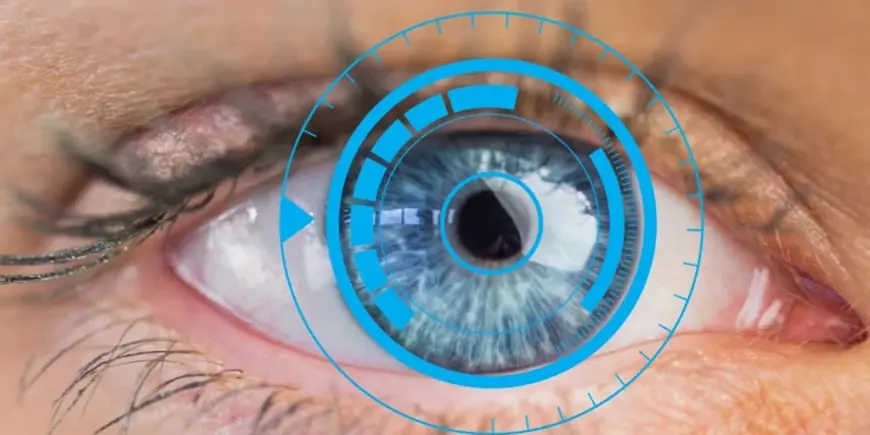Corneal Ulcer Recovery: Step-by-Step Guide to Restoring Eye Health
Discover a step-by-step guide to corneal ulcer recovery. Learn effective treatments and tips for restoring eye health with expert care.

The eyes are among the most delicate and vital parts of our body, enabling us to experience the world in vivid detail. When a condition like a corneal ulcer arises, it not only affects vision but can also cause considerable discomfort. Understanding the recovery process is crucial to restoring eye health and preventing complications. This guide explains corneal ulcer recovery step by step, providing practical insights and emphasizing the importance of expert care.
What Is a Corneal Ulcer?
A corneal ulcer is an open sore on the cornea, the clear outer layer of the eye. It can result from infections, injuries, or underlying eye conditions. Symptoms include redness, pain, blurred vision, sensitivity to light, and watery discharge. Early detection and prompt corneal ulcer treatment are essential to prevent long-term damage.
Step-by-Step Guide to Corneal Ulcer Recovery
Early Diagnosis and Immediate Treatment
The first and most crucial step in corneal ulcer recovery is early diagnosis. Visit an eye specialist at the first sign of symptoms. They will perform a thorough examination, often using fluorescein dye to detect the ulcer and determine its severity. Prompt corneal ulcer treatment minimizes the risk of complications such as scarring or vision loss.
Treatment begins with addressing the underlying cause. For bacterial infections, antibiotic eye drops are prescribed. Antifungal or antiviral medications may be necessary for fungal or viral infections. Pain relief drops and artificial tears are often recommended to ease discomfort and promote healing.
Follow the Prescribed Medication Regimen
Adhering to the prescribed medication schedule is vital for successful recovery. Eye drops need to be applied at regular intervals, sometimes even during the night. Completing the full course of medication ensures that the infection is fully eradicated, reducing the chance of recurrence.
Patients should avoid using over-the-counter eye drops without consulting their doctor, as some products can worsen the condition. Always follow the specialist’s advice for optimal results.
Protect the Eye During Healing
Protecting the affected eye is essential to prevent further irritation or infection. Avoid rubbing your eyes, and consider wearing protective eyewear or an eye patch as advised by your doctor. This shields the eye from dust, light, and other irritants during the healing process.
Limit screen time and avoid activities like swimming until the ulcer has healed completely. Resting your eyes helps speed up recovery and reduces strain.
Maintain Proper Eye Hygiene
Maintaining good eye hygiene is critical during corneal ulcer recovery. Always wash your hands thoroughly before applying eye drops or touching your eyes. Discard old makeup or contact lenses that could harbor bacteria. If you wear contact lenses, avoid using them until your doctor confirms it is safe to resume.
Attend Follow-Up Appointments
Regular follow-up appointments are crucial to monitoring the healing process. Your eye specialist will assess the ulcer’s progress and adjust the treatment plan if necessary. These visits ensure that the cornea is healing properly and help detect any signs of complications early.
Address Underlying Conditions
If an underlying condition contributed to the development of the corneal ulcer, addressing it is key to preventing recurrence. For instance, individuals with dry eye syndrome may need long-term management strategies, such as using lubricating eye drops or undergoing procedures to improve tear production. Similarly, conditions like blepharitis or eyelid infections should be treated to reduce the risk of future ulcers.
Tips for Long-Term Eye Health
Practice Safe Contact Lens Use
Contact lens wearers are at higher risk of developing corneal ulcers. Always follow proper hygiene practices, such as cleaning lenses daily and replacing them as recommended. Never sleep while wearing contact lenses unless they are specifically designed for overnight use.
Protect Your Eyes from Injuries
Wearing protective eyewear during activities that pose a risk of eye injury, such as sports or certain occupations, can prevent trauma to the cornea. Even minor injuries can lead to ulcers if not treated promptly.
Manage Chronic Conditions
Chronic conditions like diabetes or autoimmune diseases can increase the risk of eye infections and ulcers. Work closely with your healthcare provider to manage these conditions and reduce their impact on your eye health.
Schedule Regular Eye Exams
Regular eye check-ups are essential for maintaining overall eye health and detecting problems early. An experienced eye specialist can identify risk factors for corneal ulcers and recommend preventive measures.
Why Choose Expert Care?
Recovering from a corneal ulcer requires expert care and a personalized treatment approach. Super speciality eye hospitals like Maxi Vision Eye Hospital offer advanced diagnostic tools and specialized treatment options to ensure the best outcomes. With a team of experienced ophthalmologists, Maxi Vision provides compassionate care tailored to each patient’s needs. Their focus on precision and innovation sets them apart as a trusted choice for restoring eye health.
Conclusion
Corneal ulcers can significantly impact vision and quality of life, but timely and effective treatment ensures a full recovery in most cases. By following the step-by-step recovery process outlined here, patients can protect their eyes and regain clear vision. Trusting your care to a super speciality eye hospital like Maxi Vision guarantees access to cutting-edge treatments and expert guidance. Your eye health deserves the best care—because clear vision is a priceless gift.
What's Your Reaction?
 Like
0
Like
0
 Dislike
0
Dislike
0
 Love
0
Love
0
 Funny
0
Funny
0
 Angry
0
Angry
0
 Sad
0
Sad
0
 Wow
0
Wow
0





















































